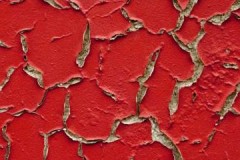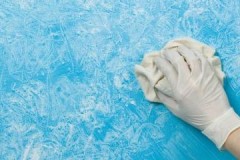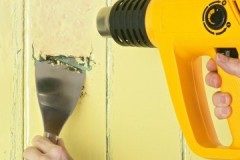A few tips on how to quickly and easily remove water-based paint from walls
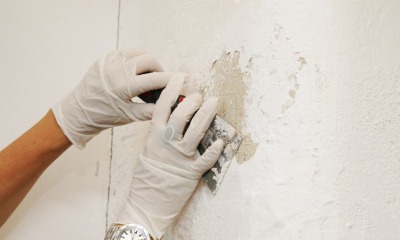 Water-based paint is used for the repair of various premises. The material is inexpensive, dries quickly and almost does not exude odors.
Water-based paint is used for the repair of various premises. The material is inexpensive, dries quickly and almost does not exude odors.
In some cases, during repeated repairs, it becomes necessary to remove the old layer.
How to quickly remove water-based paint from walls? There are several basic methods and certain nuances that you need to familiarize yourself with before starting work.
Content
Surface cleaning options
There are several basic techniques for cleaning walls from paint, each of which has advantages and disadvantages.
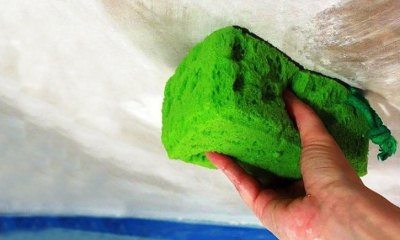 The most commonly used methods are:
The most commonly used methods are:
- mechanical;
- using special solvents;
- thermal;
- using homemade products.
It is important to consider the timing of surface treatment For example, using a solvent will take longer than mechanically cleaning.
How to remove mechanically?
This technique involves the use of additional devices:
- spatulas,
- perforator,
- grinding,
- other devices.
The material on which the paint is applied must be resistant to mechanical stress. Scratches and irregularities may appear during work.
You should start with an inconspicuous area where you can check the cleaning result and prevent possible negative consequences.
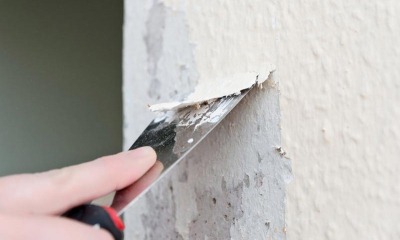 Procedure:
Procedure:
- Wet the area with a rag or roller.
- Wait for the required time.
- Remove the coating with a spatula in one direction.
- If it doesn't work right away, use a brush or sandpaper with a coarse abrasive.
The last step is cleaning. Then proceed to further processing (leveling, priming, finishing with new materials).
Grinding machines and grinders with special attachments are used for surfaces made of "soft" materials (for example, wood). Drills are suitable for any wall.
Instructions for using the power tool:
- Electrical connection (it is important to ensure that the wire is long enough, but do not twist or bend).
- Removing the coating with a spatula - sequentially, in small areas.
- Removing dust from the walls with a damp cloth.
- Final cleaning.
The mechanical method requires a certain amount of time and labor. Using a power tool speeds up the process, but electrical safety requirements are required.
How to remove quickly with solvent?
Remove thick layers of water-based paint or heavily aged coating it is possible with the help of substances with a high concentration of dissolving chemical elements.
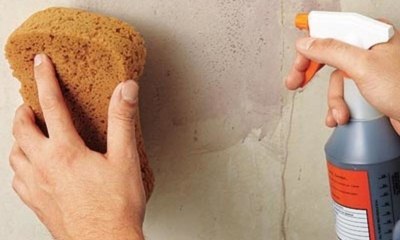 Masters recommend using products containing one of the following reagents:
Masters recommend using products containing one of the following reagents:
- isopropylene (special alcohol);
- formic acid;
- dimethyl chloride (also called dichloromethane).
These elements decompose quickly during use and do not pose a health hazard.
Chemical solvents can only be used in rooms with good ventilation.... Before use, it is important to carefully study the safety precautions, open windows and doors in a timely manner. If this is not possible, it is better to choose another method for cleaning the walls.
The average consumption of such substances is one liter per five square meters of surface.
Stages of work:
- pour the solution into a convenient container;
- apply with a brush to the surface (a small part);
- wait for the specified time (average interval of 20 minutes);
- clean the soaked area with a spatula.
At the end of the work, it is important to remove the residues from the wall. Recommendations are in the instructions (on the package).
How to clean with the thermal method?
This technique is not available to everyone due to the need to use a special tool - an electrical (construction) hair dryer. The main difference is that the paint is not wetted, but heats up to a soft state.
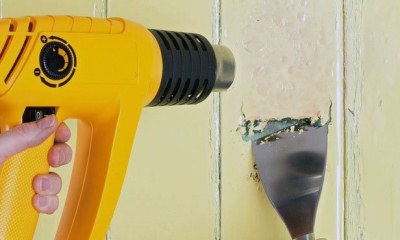 Priority of actions:
Priority of actions:
- Connect the tool to the power supply.
- The walls are heated gradually in small sections so that the paint does not have time to harden back during processing.
- With a spatula, clean off the softened material, it is important to move in one direction.
- The remains are erased with sandpaper or a wire brush.
The last stage is cleaning the room. The thermal method is one of the most laborious and unsafe. In the process, you can get serious burns. Craftsmen do not recommend using a construction hair dryer without working skills.
Using homemade products
How else to wash off the water emulsion from the wall? Water-based paint has a simple composition. Therefore, to remove it, you can prepare a solution yourself from the elements that are in every (or almost every) house.
A soap solution is often used, to which you can add:
- iodine - accelerates the removal of the old layer (usually used in a proportion of 200 ml for a regular bucket);
- chloroform - quickly dissolves latex coating;
- alcohol (vodka), salicylic acid - used for acrylic compounds.
Professional advice
The soap solution is suitable for water-based paint with a non-water resistant composition. It is simple to check - wet a small area, wipe with a sponge. If streaks appear on the wall, and dye remains on the sponge, then the material does not require special solvents.
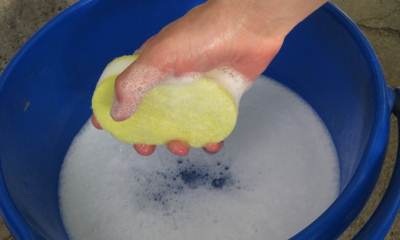 Working with bar soap will be easier if you rub it first on a grater, chop finely, scrape with a knife.
Working with bar soap will be easier if you rub it first on a grater, chop finely, scrape with a knife.
Additionally, you can apply small notches on the wall (for example, with a knife or the angle of a trowel) - the softening process will be faster. The main thing is not to make scratches too deep, so as not to damage the base of the wall.
When working with a construction hairdryer or other power tools, craftsmen recommend dividing the wall into sections and marking the boundaries (with a pencil or in another convenient way). This approach will allow you to move in the right direction and track the stages of cleaning, working time.
If the heated composition gets from the wall to other places, it is better to wipe it immediately with a damp cloth.... Otherwise, the paint will dry out again and you will have to re-treat it with a hairdryer or solvent. Professionals recommend covering all surfaces in the rooms - with newspaper, film, rags.
Useful video
How to remove water-based paint from walls and ceilings, the video will tell you:
Conclusion
About 20-30 years ago, water-based paint was one of the most popular materials for interior decoration. Therefore, in the apartments of the old housing stock, almost all the walls are covered with a similar composition.
The modern market offers a much wider selection of building and finishing elements. Therefore, the old coating has to be removed.
In most cases, a soapy solution is sufficient (especially if the room is small - bath, toilet)... Sometimes the use of special tools is required - a construction hair dryer, a grinder with suitable attachments. In some cases, it is better to contact the master (so as not to harm the base of the wall).

